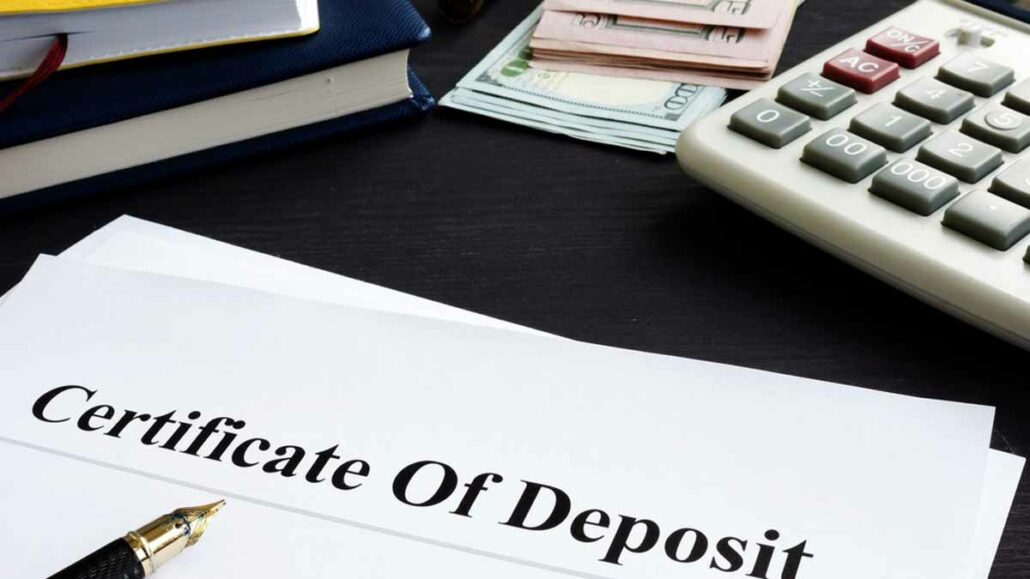Are CD Rates Compounded? Considering a Certificate of Deposit (CD) to stash your savings? You might be wondering if CDs offer the magic of compound interest. The answer is yes, in most cases! Compound interest is often touted as a powerful tool for growing your money, and CDs can leverage that power. This two-paragraph intro will delve into how CD rates work with compounding, explaining how it can benefit you and what factors to consider when choosing a CD.

In the following sections, we’ll explore the nitty-gritty of CD interest compounding. We’ll explain how frequently compounding happens, how it impacts your earnings, and why the Annual Percentage Yield (APY) is a crucial number to consider when comparing CD options. So, if you’re interested in harnessing the power of compound interest with CDs, keep reading.
What is Compounding Interest?
Imagine earning interest not just on your initial deposit, but also on the interest you’ve already accumulated. That’s the magic of compounding interest! It’s like a snowball rolling down a hill, gaining momentum as it grows. For example, let’s say you invest $1,000 in a CD with a 2% annual interest rate compounded monthly. After one year, you’ll earn $20 in interest, bringing your total balance to $1,020. But here’s the exciting part: in the second year, you’ll earn interest not only on the original $1,000 but also on the $20 you earned earlier. This snowball effect continues year after year, significantly boosting your overall returns.
Do CD Rates Compound? Absolutely!
The vast majority of CDs offer the benefit of compounding interest. This means you earn interest on both your principal amount and the accumulated interest over time. However, it’s crucial to understand the compounding frequency, which can vary depending on the CD you choose.
How Often Are CD Rates Compounded?
- Daily Compounding: This is the most favorable scenario, as interest is calculated and added to your balance every single day. Even small daily increases can lead to a substantial difference in the long run.
- Monthly Compounding: Interest is calculated and added to your balance monthly. While not as powerful as daily compounding, it still allows your earnings to grow over time.
- Quarterly Compounding: Interest is compounded quarterly (every three months). This results in slightly lower returns compared to daily or monthly compounding.
- Annual Compounding: Interest is added to your balance just once a year. This is the least frequent compounding option and offers the least growth potential.
Maximizing Your Returns with Compounding CD Rates
Here are some key strategies to maximize your returns with compounding CD rates:
- Choose a CD with a Higher Interest Rate: The higher the interest rate, the faster your money grows through compounding.
- Opt for Longer Terms: Generally, longer-term CDs offer higher interest rates. This allows you to benefit from compounding for a more extended period.
- Consider a CD Ladder: Create a “ladder” by investing in CDs with different maturity dates. This allows you to access funds periodically while still benefiting from compounding on some of your investments.
- Reinvest Earned Interest: Instead of withdrawing your earned interest, consider reinvesting it back into your CD. This allows you to compound your earnings even faster.
Simple Interest vs. Compounding Interest:
While some financial products offer simple interest, it pales in comparison to the growth potential of compounding interest. Simple interest is calculated only on the initial principal amount, not on the accumulated interest. This means your earnings remain stagnant over time. Let’s revisit our previous example: with a 2% simple interest rate, you’d only earn $20 per year, regardless of how long you keep your money invested.
The Benefit of Compounded Interest on CDs
The more frequently interest compounds, the faster your money grows. For example, a CD with a 2% annual interest rate compounded monthly will earn you more interest than a CD with the same rate compounded annually.
How Often Do CDs Compound?
CD compounding frequency varies depending on the financial institution. Common compounding intervals include:
- Monthly
- Daily
- Quarterly
- Annually
APY vs. Interest Rate: Why APY Matters
The Annual Percentage Yield (APY) takes compounding into account and reflects the true annual return you can expect on your CD. When comparing CDs, always focus on the APY, as it provides a more accurate picture of your earnings.
How It Grows Your Savings Significantly
The power of compounding truly shines over extended periods. Here’s how a seemingly small difference in compounding frequency can translate to substantial gains over time:
Imagine you invest $5,000 in a 10-year CD with a 3% annual interest rate. Here’s the potential difference in earnings:
- Daily Compounding: You could earn approximately $1,815.93 in interest.
- Monthly Compounding: You’d earn around $1,758.73 in interest.
- Annual Compounding: You’d earn roughly $1,500 in interest.
Over a decade, the difference between daily and annual compounding adds up to a significant sum: $315.93! This is the true power of compounding at work.
Types of CDs and Compounding
While most CDs offer compounded interest, there might be slight variations depending on the specific type:
- Traditional CDs: These typically offer daily or monthly compounding.
- High-Yield CDs: These might have similar compounding frequencies to traditional CDs.
- No-Penalty CDs: These CDs may have lower interest rates or less frequent compounding to compensate for the early withdrawal flexibility.
FAQs on Compounding and CD Rates
Do all CDs compound interest?
Almost all CDs offered by reputable financial institutions will have compounding interest.
How can I find out how often a CD compounds interest?
The compounding frequency should be clearly stated in the CD terms and conditions provided by the bank or credit union.
Is a higher compounding frequency always better?
While more frequent compounding generally leads to higher returns, it’s important to consider other factors like the interest rate and CD term when making your choice.
What are the best ways to maximize my earnings with CDs?
- Choose a CD with a competitive APY and a compounding frequency that aligns with your goals.
- Consider locking into longer terms that often offer higher interest rates.
- Re-invest your matured CD to benefit from continued compounding.
By understanding how CD rates compound, you can make informed decisions about your savings and watch your money grow at an accelerated pace.

